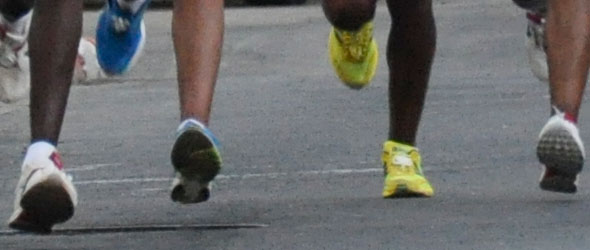 Article 2 of a technical discussion relating to the Stance Phase Dynamics and Pronation – Dr Regan Arendse MBChB, MSc Sports Medicine cum laude.
Article 2 of a technical discussion relating to the Stance Phase Dynamics and Pronation – Dr Regan Arendse MBChB, MSc Sports Medicine cum laude.
Continuing on from the the first article on Pronation and the mechanisms of running injuries. – Introduction and Gait Cycle
Now for Part 2 – Stance Phase Dynamics and Pronation
Stance phase dynamics
The events of the foot that occur during the stance phase of the gait cycle may be divided into three periods. The first period is described as the loading period and begins with the first contact of the foot with the running surface. Runners that have a heel-toe style of running, usually initiate running surface contact with the heel. In contrast forefoot runners usually make initial contact with the running surface with the front of the foot. The following events are described for runners that have a heel-toe style of running. During the loading phase, the heel makes initial contact with the running surface. This usually involves a brief transmission of force from the foot to the running surface. A controlled lowering of the forefoot to the running surface follows this.
During this period, progressively increasing force is delivered to the running surface as the foot accepts the load of the body. Once the forefoot is in contact with the running surface, the foot is described to have entered the midstance period of the stance phase. During the midstance phase, the force that is exerted by the runner on the running surface is reduced. The beginning of the propulsion period of stance phase is punctuated by the lifting of the heel from the running surface. During this phase the contraction of the musculature of the leg to generate power to propel the body forward causes an increase in the force exerted by the foot on the running surface. The heel progressively lifts and the forefoot flexes at the metatarsophalangeal joint. The terminal event of stance phase is described as toe-off in which the foot disengages contact with the running surface. The force exerted by the body on the running surface is abruptly reduced and the body becomes airborne. The changes in the forces with the three periods of stance phase is measured with an instrument called a force plate which may be mounted in the floor of a running track in specialized gait analysis laboratories.
Pronation
Pronation is a normal movement of the foot that occurs during the loading and midstance periods of the gait cycle. At heelstrike during the loading period of stance phase, the heel of the foot makes initial contact with the running surface as described earlier. Instantaneously, the joint between the foot bones called the subtalar joint is unlocked. This allows the foot to assume the following positions during the forefoot lowering events of the loading period of the stance phase. The positions that are assumed by the foot are abduction, in which the front of the foot is turned outwards and away from the line of progression of the runner; dorsiflexion, in which the front of the foot is angle upwards relative to the heel of the foot; and eversion, in which the sole of the foot is turned outward relative to the heel of the foot. The result of the combination of these three motions is to allow the medial aspect (arch area) of the foot to come into contact with the running surface.
Pronation allows the foot to adapt to the running surface. This function probably evolved in the earlier days of Man’s development, when Humans were required to run on irregular ground surfaces. During pronation, the foot is simultaneously able to transfer some of the loading force to the running surface. The consequence of these two functions is to reduce the risk of injury during the stance phase of running. The pronated position of the foot is maintained throughout the midstance period. However, as the body moves forward over the foot, the subtalar joint is described to lock. This allows a reversal of the events that have occurred during the loading period to occur during the propulsion period. During the propulsion period of stance, the locking of the subtalar joint allows the foot to adduct (turn inward toward the line of progression), plantarflex (forefoot is flexed downward relative to the heel) and invert (the sole of the foot is turned inward relative to the heel). The consequence of these motions is that it allows the foot to be converted from a mobile adaptor to a rigid lever. The rigid lever is essential for the forward propulsion of the body. The term that has been coined to describe the latter combination of events is supination.
The above article followed on from the first article in the Pronation and the mechanisms of running injuries series – Introduction and Gait Cycle and now for Part 3 – Excessive pronation

Leave a Reply